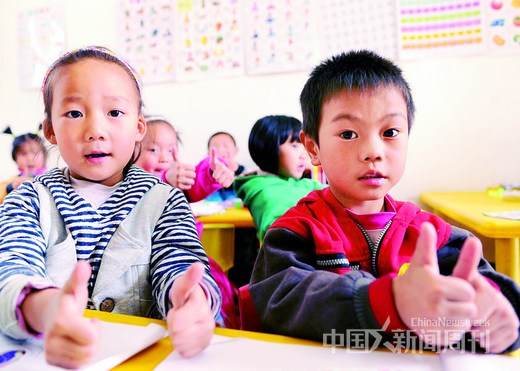(Ecns.cn) – Ningshaan, a poverty-stricken county in northwest China's Shaanxi Province, has won applause for its groundbreaking attempt to provide 15 years of free schooling to children, making it the first impoverished county to make such an innovative move in the nation.
On September 1, Qu Gangyou from the Shiziba Village of Ningshaan County, found that his child's kindergarten charges were to be reduced by 90 yuan ($13.9 for tuition fee) a month, a change brought on by the county's decision this fall to extend its free education system to 15 years.
The move was seen as the fourth step in the county's quadruple jump: In 2007, Ningshaan took the lead in implementing the nutrition plan for boarding students; in 2008, the county began offering free vocational training; since 2009, it has provided free senior middle school education; and on August 23, 2011, it approved a proposal to cancel tuition fees for preschool children from three to six years old.
Many wonder how a county whose revenue was only 30.75 million yuan ($4.75 million) in 2010 could afford 15 years of free education. But behind the policy there are some vital factors that may provide clues to its success.
Demographic advantage
Lai Bangzhi, headmaster of the Ningshaan Senior Middle School, revealed a group of numbers to China Newsweek which might explain the decision to implement the 15-year free education policy.
According to Lai, there were more than 1,300 students in the third year of middle school across Ningshaan County in 2004. In 2007, that number fell to about 1,200, and in 2009 the number dropped to less than 1,000. Now, in 2011, the number of junior high school graduates is only 638.
Due to the decrease of student resources, two middle schools in Ningshaan County had to close in 2010. Both the staff and the students were dismissed; most of the students changed schools to continue courses elsewhere.
According to Lai, there were only four township junior middle schools in the county, but now the other three are also facing the same problem. The county government plans to repeal them in five years, and educate the children in the same junior middle school at the county-level.
Lai hopes that once the number of junior middle school graduates stabilizes at around 500, the county's senior high school will maintain a scale of about 1,500 students, and that they will receive better educational resources than before.
Yang Chunhua, head of the Family Planning Bureau of Ningshaan County, told China Newsweek that the county's birth rate has been on a downtrend since the 1980s, and that the number of newborn babies has remained at about 500 in recent years.
Given that the post-90s generation will soon become the major birthing group, but are likely to have fewer children, this target should be easy to ensure, he said.
An official of the Ningshaan government once pointed out that, under such conditions, it is very necessary to get all students enrolled in senior middle schools, and the problem to be solved is the free education plan. Since then, the government has been working to make high school education free and compulsory.


















